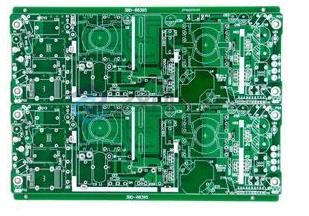1. Introduction With the continuous improvement of human requirements for the living environment, the environmental problems involved in the current PCB production process appear to be particularly prominent. At present, the topic of lead and bromine is the most popular; lead-free and halogen-free will affect the development of PCB in many aspects.
Although at present, the changes in the surface treatment process of circuit boards are not very large, and seem to be relatively remote, it should be noted that long-term slow changes will lead to huge changes. With the increasing demand for environmental protection, the surface treatment process of PCB will definitely undergo tremendous changes in the future.
Second, the purpose of surface treatment The most basic purpose of surface treatment is to ensure good solderability or electrical properties. Since natural copper tends to exist in the form of oxides in the air, it is unlikely to remain as original copper for a long time, so other treatments are needed for copper. Although in the subsequent assembly, strong flux can be used to remove most of the copper oxides, the strong flux itself is not easy to remove, so the industry generally does not use strong flux.

3. Five common surface treatment processes There are many surface treatment processes for PCB production. The common ones are hot air leveling, organic coating, electroless nickel/immersion gold, immersion silver and immersion tin, which will be introduced one by one below. .
1. Hot air leveling Hot air leveling, also known as hot air solder leveling, is a process of coating molten tin-lead solder on the surface of the PCB and flattening (blowing) it with heated compressed air to form a layer that is resistant to copper oxidation and can Provides a coating layer with good solderability. During hot air leveling, the solder and copper form a copper-tin intermetallic compound at the joint. The thickness of the solder to protect the copper surface is about 1-2 mils.
The PCB should be immersed in molten solder during hot air leveling; the air knife blows the liquid solder before the solder solidifies; the air knife can minimize the meniscus of the solder on the copper surface and prevent solder bridging. There are two types of hot air leveling: vertical and horizontal. Generally, the horizontal type is considered to be better. The main reason is that the horizontal hot air leveling is more uniform and can realize automated production. The general process of hot air leveling PCB manufacturers is: micro-etching-preheating-coating flux-spraying tin-cleaning.
2. Organic coating The organic coating process is different from other surface treatment processes in that it acts as a barrier between copper and air; the organic coating process is simple and low in cost, which makes it widely used in the industry. The early organic coating molecules were imidazole and benzotriazole, which played a role in rust prevention, and the newest molecules were mainly benzimidazole, which was the copper chemically bonding nitrogen functional groups to the PCB board.
In the subsequent soldering process, if there is only one organic coating layer on the copper surface, it will not work, there must be many layers. This is why copper liquid is usually added to the chemical tank. After coating the first layer, the coating layer adsorbs copper; then the organic coating molecules of the second layer are combined with copper until twenty or even hundreds of organic coating molecules gather on the copper surface, which can ensure that multiple cycles are performed. Flow welding. Tests have shown that the latest organic coating process can maintain good performance during multiple lead-free soldering processes. The general flow of the organic coating process is: degreasing-micro-etching-pickling-pure water cleaning-organic coating-cleaning. The process control is easier than other surface treatment processes.
3. The process of electroless nickel/immersion gold electroless nickel/immersion gold is not as simple as organic coating. Electroless nickel/immersion gold seems to put a thick armor on the PCB; PCB multilayer board s generally adopt chemical immersion gold and OSP is resistant to oxidation, and the electroless nickel/immersion gold process is not like an organic coating as an anti-rust barrier layer, it can be useful in the long-term use of PCB and achieve good electrical properties. Therefore, electroless nickel/immersion gold is to wrap a thick, good electrical nickel-gold alloy on the copper surface, which can protect the PCB for a long time; in addition, it also has environmental tolerance that other surface treatment processes do not have. sex.